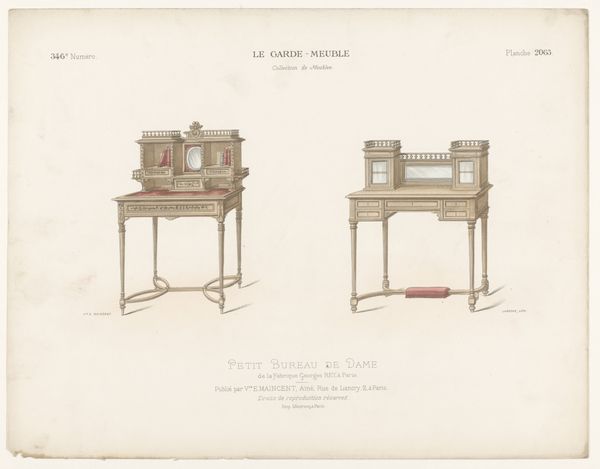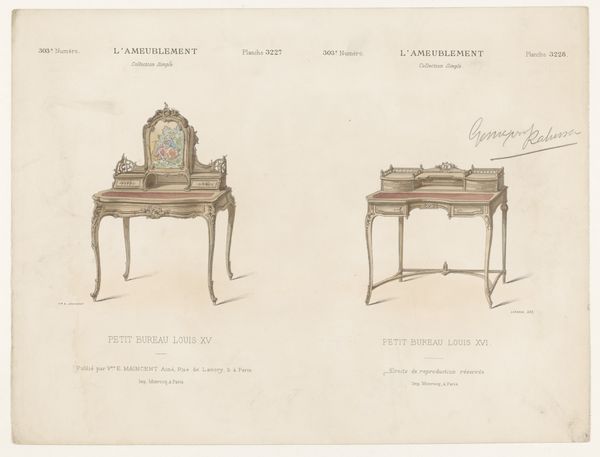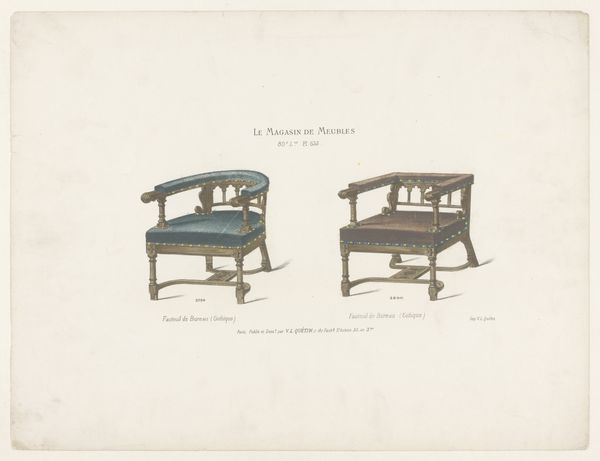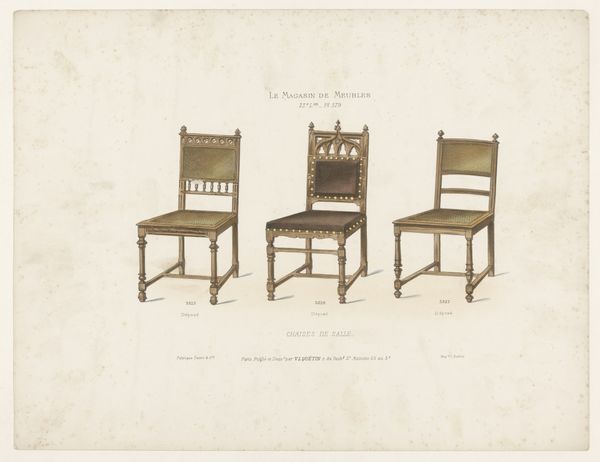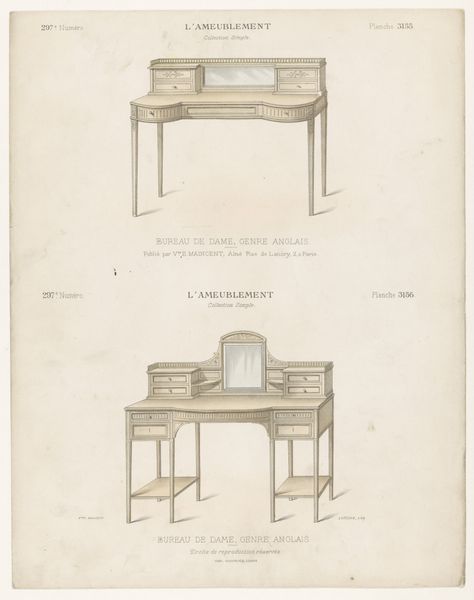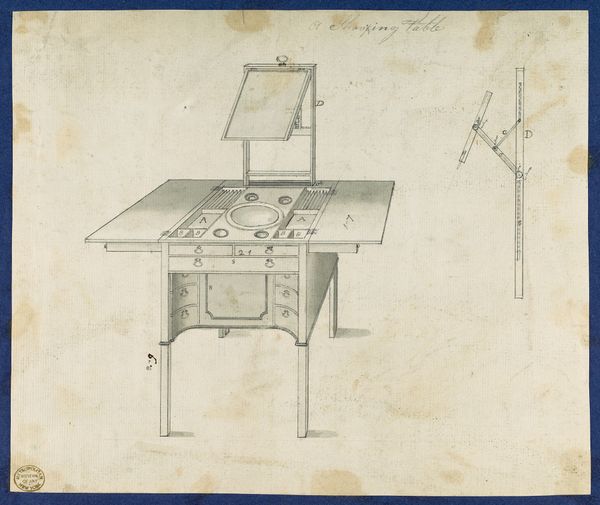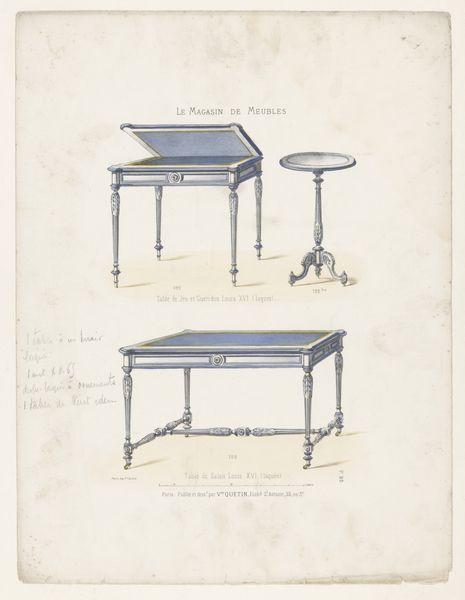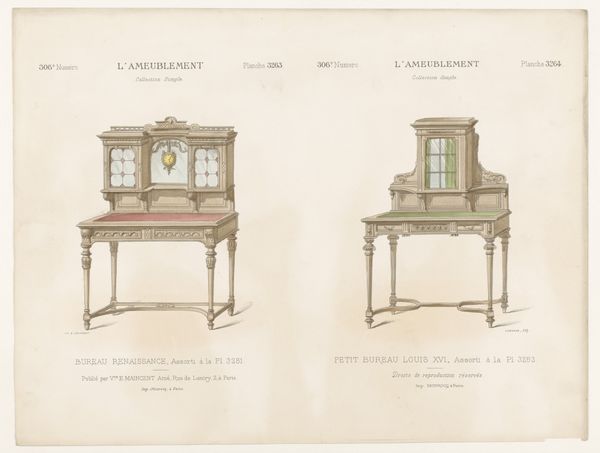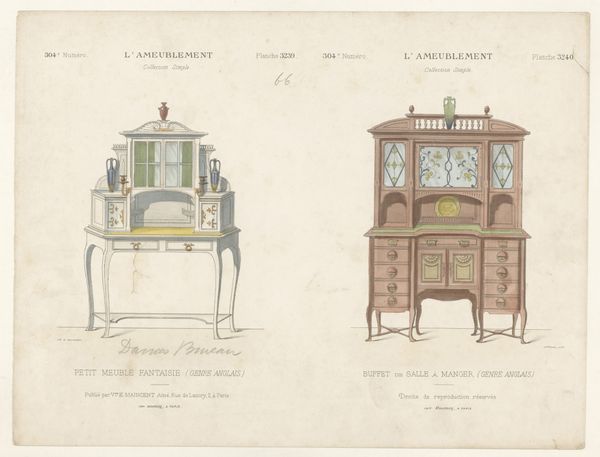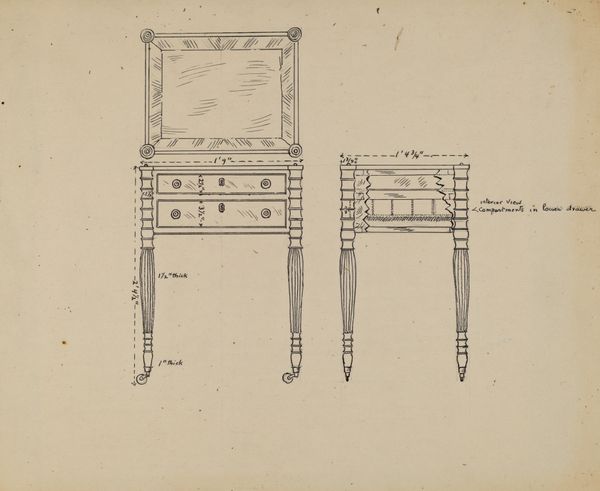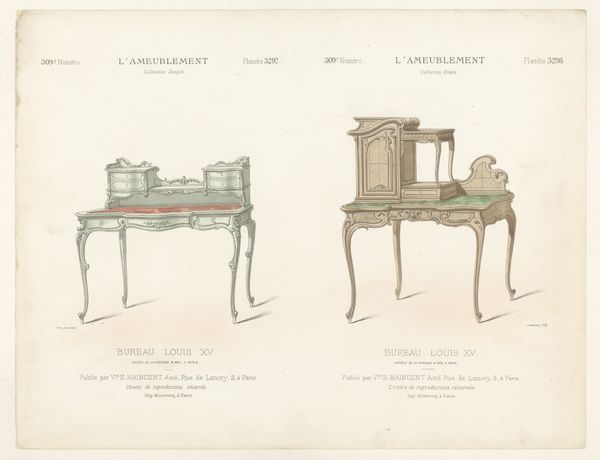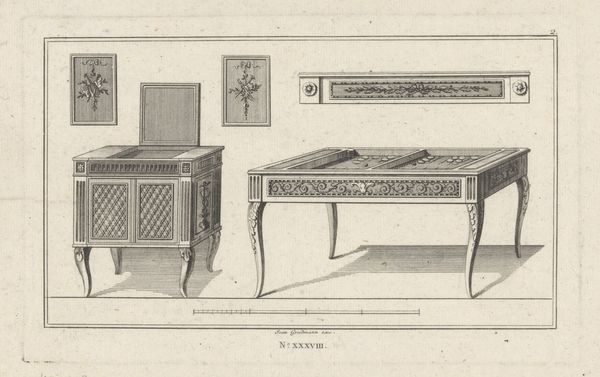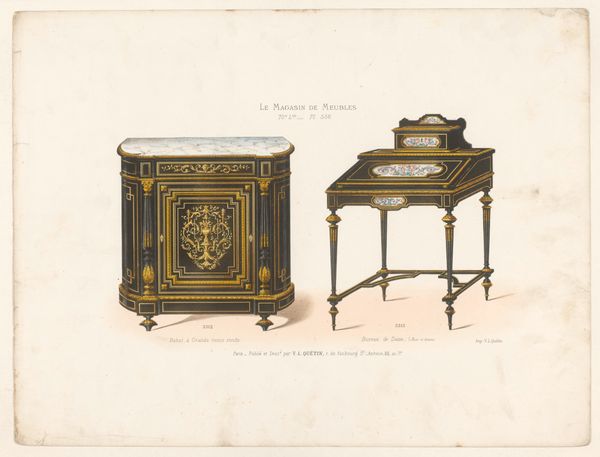
drawing, print
#
drawing
# print
#
form
#
line
#
decorative-art
Dimensions: height 272 mm, width 359 mm
Copyright: Rijks Museum: Open Domain
Editor: Here we have "Twee schrijfmeubels," or "Two Writing Desks," an 1895 print and drawing attributed to Léon Laroche. The presentation is interesting, almost like an advertisement for these refined pieces. How would you interpret this work? Curator: It's crucial to examine these desks within the historical and social context of late 19th-century design. What ideologies were at play concerning class and gender that might inform these forms and their potential users? Notice how the presentation elevates the designs, suggesting aspirational consumption among the bourgeoisie. What does the descriptor 'genre Anglais' imply about cultural values at the time? Editor: I see your point. The phrase 'genre Anglais' maybe suggests a certain level of sophistication that would be very appealing. How much does that influence our understanding of design in a broader cultural and political context? Curator: Exactly. Think about how design can either reinforce or subvert prevailing social norms. The clean lines and decorative elements could also be read as a reflection of emerging ideas about gendered spaces. What kind of person would this have appealed to at the time? Where did class come into it? And is there a parallel with our consumption of furniture today? Editor: I hadn’t considered the connection between space and gender roles, but that is very important. Curator: This piece makes us question not just aesthetics, but also how those aesthetics are embedded within structures of power and identity. Understanding that unlocks so much more meaning. Editor: This piece gives us insight into that era and its design, so thanks. I appreciate learning about the power and symbolism through design!
Comments
No comments
Be the first to comment and join the conversation on the ultimate creative platform.
